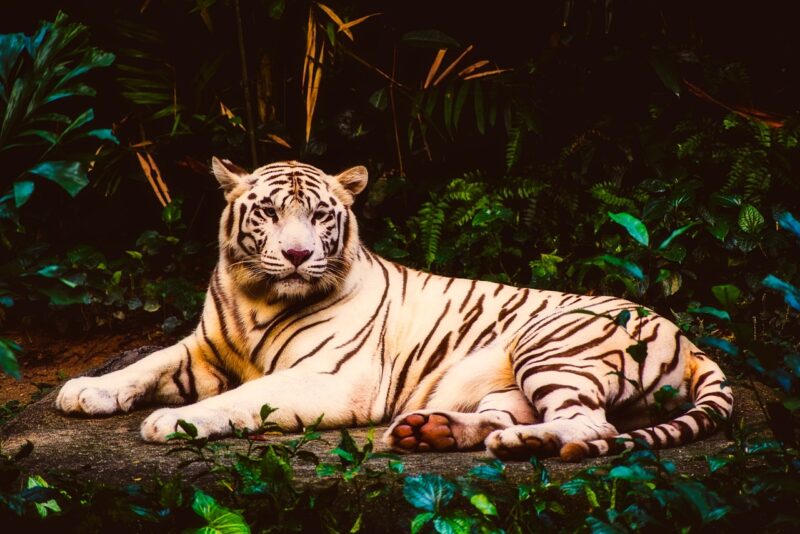Wildlife Wonders: The Most Breathtaking Creatures You’ve Never Seen
November 18, 2024

The Earth is teeming with life, hosting millions of species, many of which remain hidden in the shadows of dense forests, deep oceans, and remote corners of our planet. While we often celebrate the majestic elephants, the elusive big cats, and vibrant birds, there is a multitude of lesser-known yet equally breathtaking creatures that deserve our attention. This article dives deep into the extraordinary world of wildlife you’ve likely never seen, showcasing animals that captivate the imagination with their unique adaptations, spectacular appearances, and fascinating behaviors.
Introduction to the Hidden Gems of the Animal Kingdom
From the intricate ecosystems of rainforests to the mysterious depths of the ocean, our planet is a treasure trove of biodiversity. Many species remain undiscovered or neglected, overshadowed by more prominent wildlife. Learning about these hidden gems not only broadens our understanding of animal diversity but also highlights the importance of conservation efforts to protect these remarkable creatures and their habitats.
A Showcase of Incredible Creatures
Let’s explore some of the most breathtaking creatures that you may not have encountered in your nature documentaries or wildlife books.
1. The Okapi (Okapia johnstoni)
Often referred to as the “forest giraffe,” the okapi is native to the dense rainforests of the Democratic Republic of the Congo. With its striking zebra-like stripes on its legs and a close resemblance to giraffes, the okapi is one of the most elusive mammals on the planet. What makes the okapi particularly fascinating is its ability to thrive in a lush environment while remaining nearly invisible to predators within the thick foliage.
2. The Glaucus Atlanticus (Glaucus atlanticus)
This stunning sea slug, also known as the blue dragon, floats effortlessly on the water’s surface, displaying vibrant blue and silver hues. The glaucus atlanticus feeds on jellyfish, incorporating their stinging cells into its own body for protection against predators. Its otherworldly appearance and colorful beauty make it one of the ocean’s most captivating inhabitants.
3. The Aye-Aye (Daubentonia madagascariensis)
Hailing from Madagascar, the aye-aye is a nocturnal lemur with an uncanny appearance—large eyes, oversized ears, and an elongated middle finger. This finger is specifically adapted for foraging, allowing the aye-aye to tap on trees to locate hidden insects. While often viewed as a harbinger of bad luck in local folklore, the aye-aye plays a crucial role in its ecosystem.
4. The Saola (Pseudoryx nghetinhensis)
Often dubbed the “Asian unicorn,” the saola is one of the rarest animals on Earth, discovered only in 1992 in Vietnam. With its striking white facial markings and long, straight horns, the saola remains incredibly elusive. Efforts to study and conserve this enigmatic creature are critical, as it faces severe threats from habitat destruction and poaching.
5. The Axolotl (Ambystoma mexicanum)
Known for its adorable smile and striking external gills, the axolotl is a type of salamander that remains aquatic and retains its larval features throughout its life—a phenomenon known as neoteny. These creatures are native to Mexico and are critically endangered; however, they have gained popularity in laboratory research and as exotic pets due to their regenerative abilities and charming appearance.
6. The Quokka (Setonix brachyurus)
Often called the “world’s happiest animal,” the quokka is a small marsupial native to Australia. With its round face and perpetually cheerful expression, the quokka has become a social media sensation. Its friendly demeanor and inquisitive nature make it a favorite among wildlife enthusiasts. Unfortunately, habitat loss and introduced predators pose significant threats to their population.
The Importance of Wildlife Conservation
Many of the creatures mentioned above are not just unique due to their physical traits; they also provide vital ecological services. Protecting these animals and their habitats is crucial for maintaining biodiversity, which contributes to the health of our planet. Conservation efforts include habitat preservation, sustainable practices, and raising awareness of species at risk. Every small effort counts in the fight to save these breathtaking creatures before they vanish from our planet, possibly forever.
How You Can Help
While many of us may not have the opportunity to interact with these incredible species in person, there are numerous ways we can contribute to wildlife conservation:
- Support reputable wildlife organizations dedicated to conservation efforts.
- Educate yourself and others about the importance of biodiversity.
- Adopt sustainable practices—reduce, reuse, recycle, and be mindful of your ecological footprint.
- Participate in local conservation activities, such as beach clean-ups or reforestation efforts.
- Choose to support businesses that prioritize ethical and sustainable sourcing.
By becoming informed advocates for wildlife, we can collectively make a difference and ensure that future generations will have the chance to encounter these breathtaking creatures.
Conclusion
The world is home to extraordinary wildlife wonders that remain largely unseen and unexplored. By shining a light on these awe-inspiring species, we not only celebrate their beauty but also ignite conversations about conservation. As we learn more about nature’s marvels, we become better stewards of our planet, ensuring that breathtaking creatures, from the okapi to the quokka, continue to thrive in their natural habitats for generations to come.
Start exploring the hidden wonders of wildlife today and join the fight to protect these incredible beings for the future. Nature’s beauty lies in its diversity, and every creature plays a role in the intricate tapestry of life on Earth.







